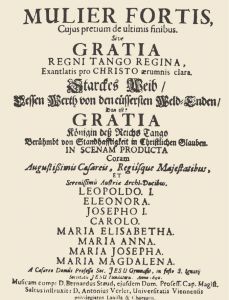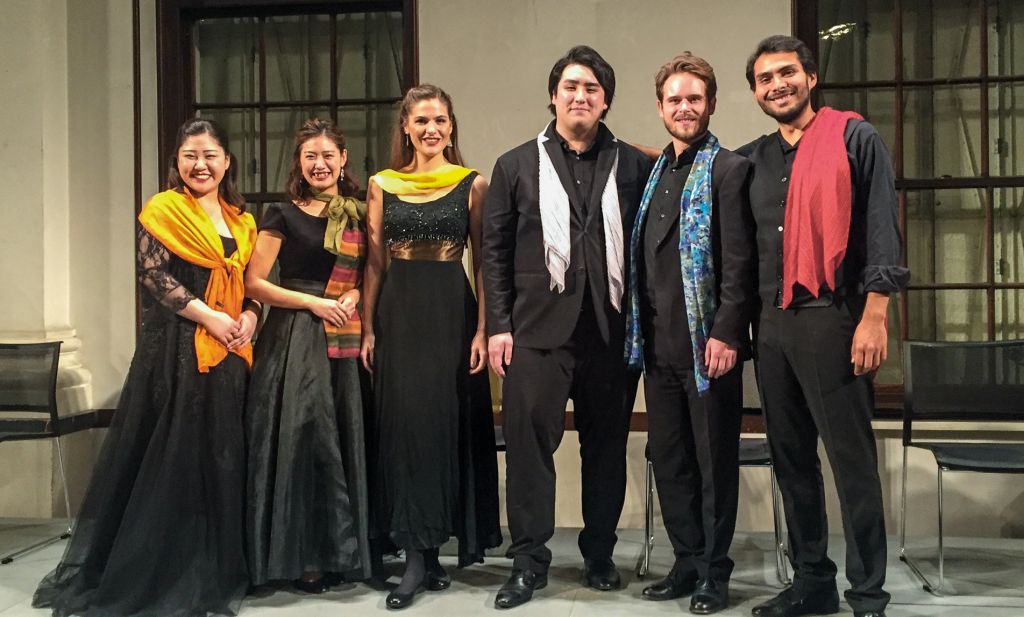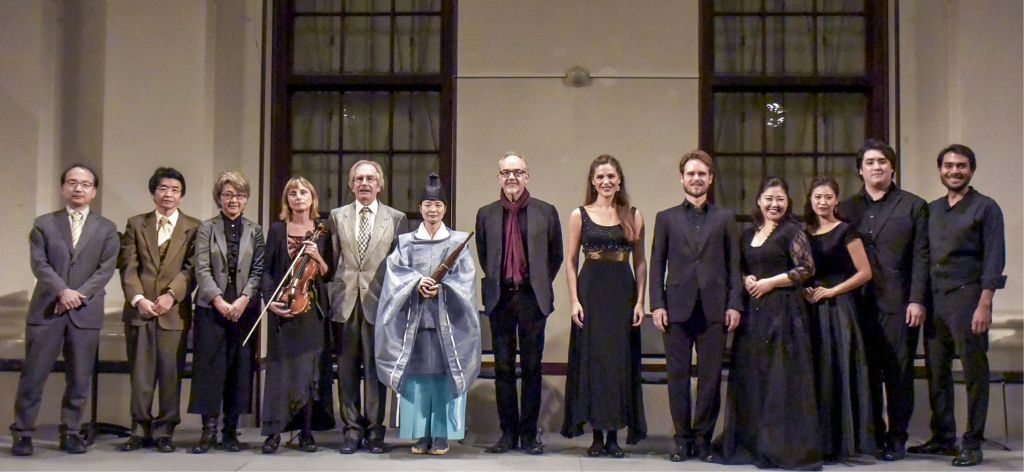Japan und Österreich

2019 feierten wir 150 Jahre diplomatische Beziehungen zwischen Japan und Österreich. Eineinhalb Jahrhunderte einer wechselvollen Geschichte, die eine völlige Veränderung des Begriffs eines österreichischen Staates ebenso wie einen Wandel vom „Entwicklungsland“ Japan zu einer führenden Industrienation gebracht haben. Eines ist durch den stetigen Wandel hindurch konstant geblieben: Die gegenseitige Achtung und Bewunderung der Kulturen und Traditionen, ganz besonders im Bereich der Musik. Japan hat sofort nach der Öffnung des Landes Kontakte zu Österreich aufgenommen, um die westliche Musik kennenzulernen. Umgekehrt haben sich Größen wie Johannes Brahms und später Eta Harich-Schneider außerordentlich für die traditionelle japanische Musik interessiert. Was ist also naheliegender, als dieses große freundschaftliche Jubiläum mit einer Musik zu begehen, die sowohl einen Bezug zu Japan als auch zu Österreich hat?
Im Europa des 16. und 17. Jahrhunderts war Japan zwar ein exotisch-fremdes, aber keineswegs gänzlich unbekanntes Land. Es wurde von portugiesischen und spanischen Seefahrern erkundet und bald von jesuitischen Mönchen missioniert. Die innenpolitischen Probleme des japanischen Reiches um 1600 führten zu einer Verdrängung äußerer Einflüsse, Vertreibung von Fremden und der Unterdrückung ausländischer Ideen, und schließlich zur völligen Isolation. Eine Geschichte aus diesen Zeiten des Umbruchs und der konfessionellen Spannungen soll mit dieser Neuinszenierung wieder in Erinnerung gerufen werden: eine Geschichte, die im Kyoto des 16. Jahrhunderts spielt und 1698 in Wien geschrieben und uraufgeführt wurde.

Mulier fortis
Mulier fortis (Eine starke Frau) erinnert an die Leidensgeschichte der Hosokawa Tamako (1563–1600), einer adeligen, mit einem Feudalherrn verehelichten, historischen Persönlichkeit. Unter dem Taufnamen Gracia (japanisch: Garasha) konvertierte sie zum Christentum, wurde aus politischen Motiven verfolgt und zur Selbsttötung durch Harakiri gezwungen. In dem vorliegenden Jesuitendrama wurde der Stoff aber verändert: Gracia stirbt durch die Hand ihres gewalttätigen Ehemanns, weil sie die Verleugnung des neuen Glaubens standhaft verweigerte. Die so zur Märtyrerin gemachte Frau wird als Vorbild der Beständigkeit und Stärke gefeiert.
In vier oratorienhaften Zwischenspielen mit der Musik des Wiener Hofkomponisten Johann Bernhard Staudt (1654–1712) wird der Streit der Tugenden und Affekte (dargestellt als allegorische Figuren) in den schwierigen Situationen des Lebens dargestellt.
Die Premiere am Wiener Jesuitenkolleg fand 1698 im Beisein der kaiserlichen Familie statt. Die Begriffe der Tugenden und moralischen Werte versucht man in barocke Bilder und Personen zu übersetzen. „Constantia et Fortitudine“, Beständigkeit und Stärke, sollten zum Wahlspruch des späteren Kaisers Karl VI. werden, der als Prinz die Uraufführung von Mulier fortis erlebte.
Neuinszenierung

Die erste Wiederaufführung fand nach mehr als 300 Jahren am 21. November 2019 mit Studierenden der Kyoto City University of the Arts und Sänger_innen der mdw unter der Leitung von Ingomar Rainer in Kyoto statt. Dabei handelt es sich nicht um historisches Reenactment, denn wir möchten Ideen und Assoziationen weiterspinnen, über die Zeiten und Kulturen hinweg. So wird die Performance mit einem Stück für das traditionelle Gagaku-Instrument Shô eröffnet, einer Musik, wie sie Gracia Hosokawa zu ihren Lebzeiten gehört haben mag.
Die Allegorie der Beständigkeit hat Karlheinz Essl zu dem instrumentalen Ensemblestück Constantia inspiriert. Der Ton G – eine Anspielung auf den Vornamen der Garasha Hosokawa – durchzieht seine Komposition wie ein roter Faden, der allen Schwankungen und Fährnissen widersteht.
Georg Muffats Concerto grosso Cor vigilans (das wachsame Herz) führt uns weiter durch die Welt barocker Bilder, Anspielungen und Allegorien.

Für die Wiener Aufführung am 26. März 2020 in der Wiener Hofmusikkapelle (Hofburg) komponieren Studierende von Karlheinz Essl elektroakustische Miniaturen, die in den dramaturgischen Ablauf eingeflochten werden. Dabei spielt neben Soundscapes, Computerklängen und einer durchkomponierten Schlussperformance auch das japanische Gagaku-Instrument Shô eine wichtige Rolle.
So hoffen wir, damit ein wenig mehr zu bieten als ein typisches Konzert „alter Musik“: zumindest den Versuch einer wirklichen Aneignung unserer gemeinsamen Vergangenheiten und eine lebendige Auseinandersetzung mit der heutigen Zeit.

